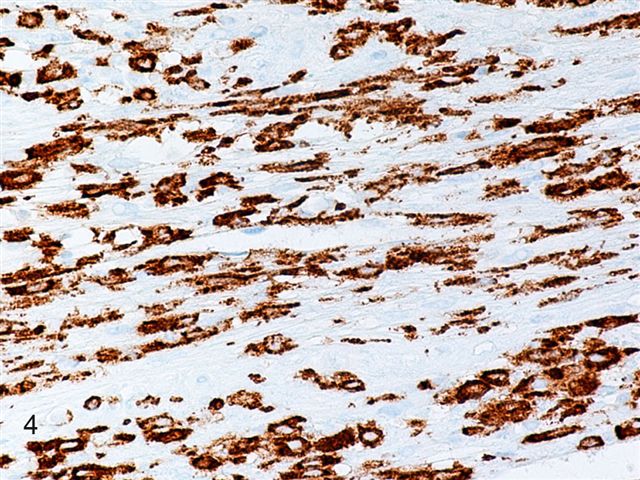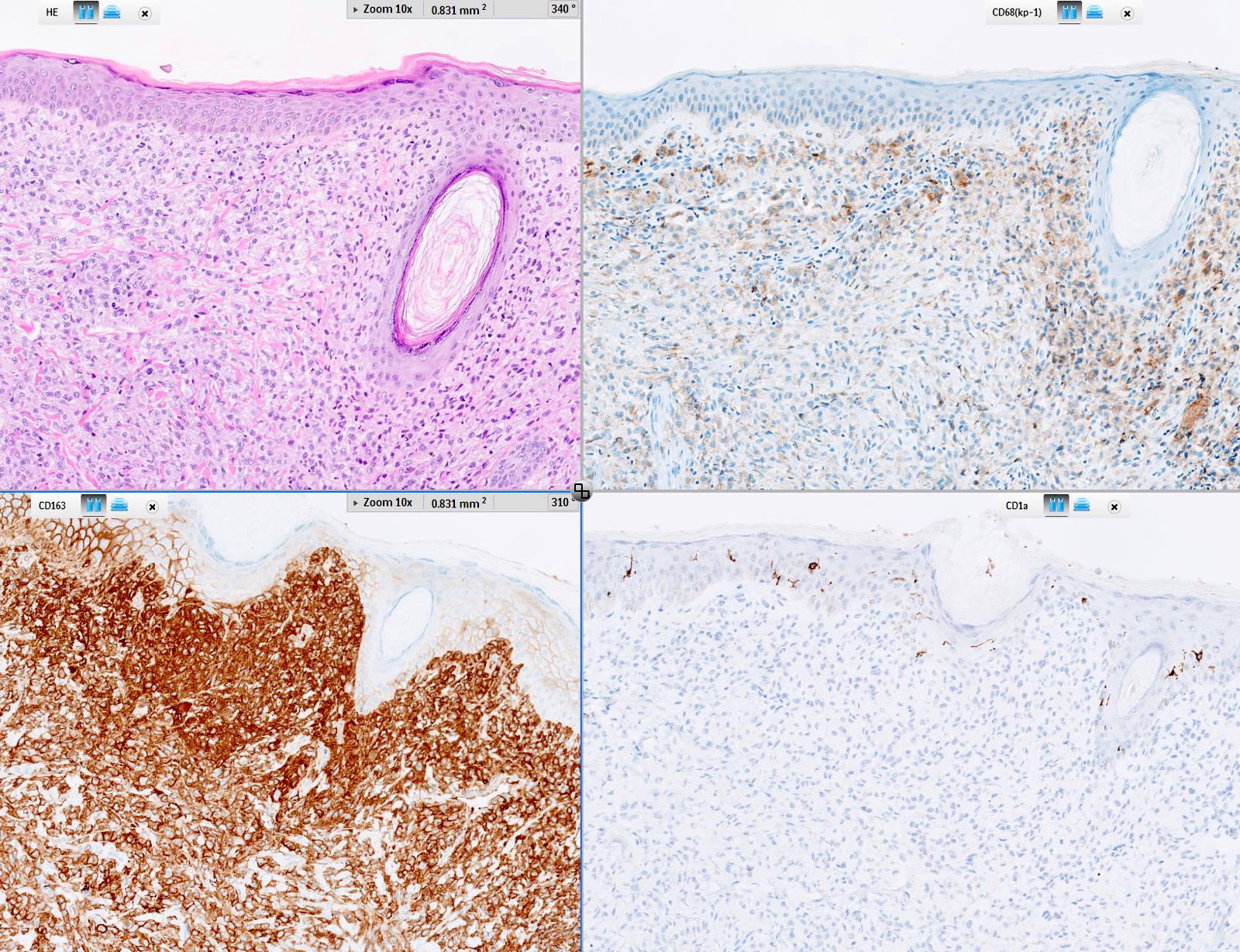Table of Contents
CD160 | CD161 | CD162 | CD163 | CD164 | CD165 | CD166 | CD167 | CD168 | CD169 | Microscopic (histologic) imagesCite this page: Pernick N. CD160-169. PathologyOutlines.com website. https://www.pathologyoutlines.com/topic/cdmarkerscd160.html. Accessed April 19th, 2024.
CD160
- Aka BY55
- Expression tightly associated with peripheral blood NK cells and CD8+ T lymphocytes with cytolytic effector activity
- Positive staining - normal: circulating NK (CD56 dim, CD116+) and T cells, spleen, small intestinal intraepithelial lymphocytes
CD161
CD162
- Aka P-Selectin Glycoprotein Ligand 1 (PSGL-1)
- Important in adhesive interactions between circulating leukocytes and platelets and endothelial cells
- Mediates rolling on activated endothelium or activated platelets (which express P selectin / CD62P) and other leukocytes at inflammatory sites
- Site of binding of human granulocyte ehrlichiosis bacteria
- Positive staining - normal: myeloid cells, stimulated T cells
- CD162R:
- Aka PEN5
- Positive staining - normal: NK cells
CD163
- Hemoglobin / haptoglobin scavenger receptor
- Soluble form attenuates immune response
- Positive staining - normal: monocytes / macrophages
- Positive staining - disease: histiocytic sarcoma (Diagn Pathol 2007;2:7)
CD164
- Aka MUC-24, sialomucin
- Mucin-like cell surface glycoprotein that facilitates adhesion of CD34+ cells
- Regulates hematopoietic cell proliferation
- Positive staining - normal: small and large bowel epithelia; lung, thyroid epithelia
- Positive staining - disease: colorectal carcinoma, pancreatic adenocarcinoma
CD165
CD166
CD167
- Aka Discoidin Domain Receptor 1 (DDR1)
- Has homologous region to the Dicytostelium discoideum protein discoidin I in extracellular domain
- Tyrosine kinase receptor, may be important in cytoskeletal organization and the ability to align with other cells during aggregation
- Receptor tyrosine kinases help cells communicate with their microenvironment and regulate cell growth, differentiation and metabolism
- Activated by collagen types I - V, VIII
- May have a role in tumor invasion and metastasis
- Positive staining - normal: epithelial cells (breast, kidney, lung, GI, brain)
- Positive staining - disease: carcinomas (various)
CD168
CD169
- Aka sialoadhesin
- Macrophage restricted cellular interaction molecule that binds sialylated ligands
- Highly expressed on macrophages in chronically inflamed tissues, such as rheumatoid synovium and atherosclerotic plaques
- Positive staining - normal: macrophages (all sites but microglia)
- Negative staining: microglia






